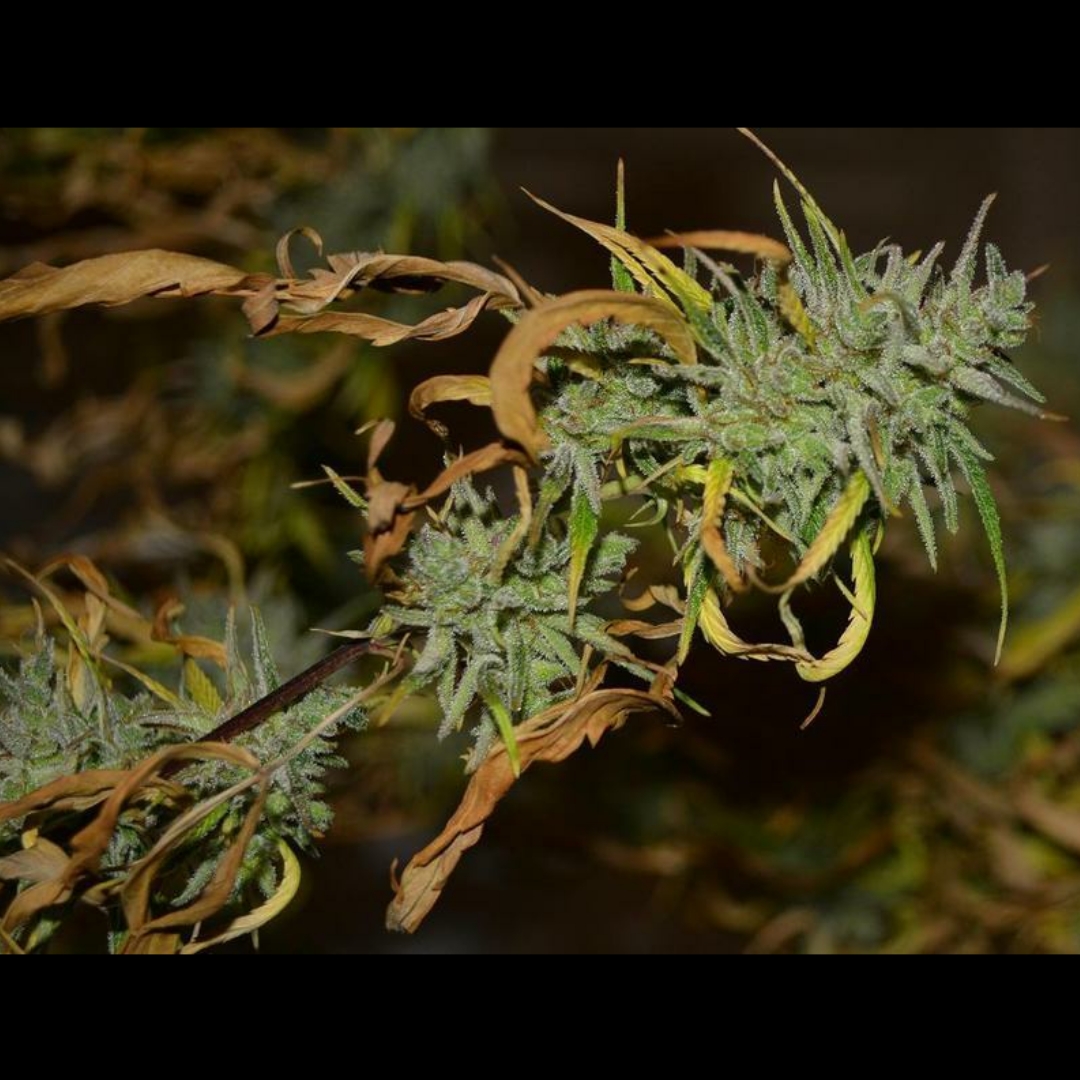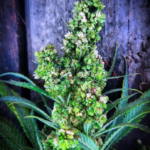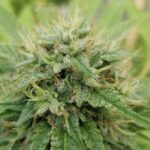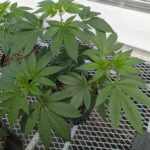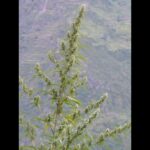The photo above is a lower branch of a Lao / ‘Thai Stick’ ganja landrace collected by Angus c. 2012 and pushed well into senescence indoors by a customer.
Strong aromas such as musk, tobacco, dark chocolate, and overripe fruit are typical of this type of Central Lao cannabis.
Resin levels in 70s ‘Thai Stick’ – produced in Central Laos and the neighbouring ethnically Lao region of north Isan – were high enough that US smugglers would test batches by squashing buds against a guesthouse wall. Good ganja stayed stuck.
Most good ganja landraces are hybrids between landraces. Farmers in Laos literally refer to their cannabis strains as hybrid (ປະສົມ), in the sense of originating from crosses between Lao landraces.
Back in the 1970s, UK government labs tested seized ‘Thai Stick’ ganja that even after months of travel and sitting in customs warehouses and no gaming of the tests still showed 17% THC.
Individual plants with that level of potency are easy to find in these Lao populations, as with our other accessions of ganja landraces such as ‘Kerala’.
More importantly, the effects of these old-school strains are radically different from most modern hybrids. On their first experience with good ganja, western tokers can be blown away by the intense euphoria and positivity or by the breathless, speedy rush, quickly finding themselves in an expansive, trippy headspace.
The 1785 description by Jean-Baptiste Lamarck, who analyzed a specimen of East Indian ganja, probably collected south from Bengal on the Coromandel Coast at Pondicherry, still holds true. He noted the ganja’s strong odour “resembling somewhat that of tobacco” and captured its effect nicely in 18th century idiom: “The principal effect of this plant consists of going to the head, disrupting the brain, where it produces a sort of drunkenness that makes one forget one’s sorrows, and produces a strong gaiety.”
Real Lao, Thai, and Shan cannabis landraces are critically endangered. Seeds of recent accessions that are – to the best of our knowledge – pristine and authentic are available in the section for ganja domesticates from Southeast Asia.
